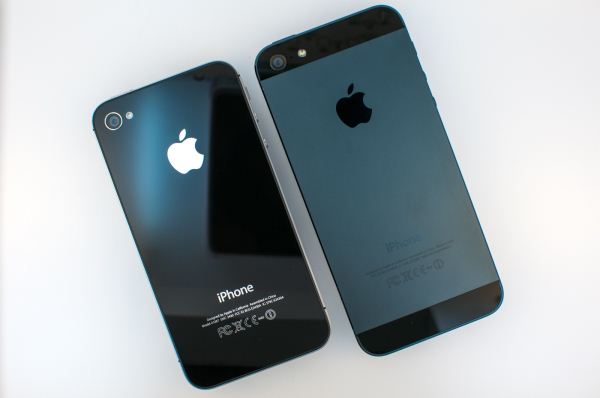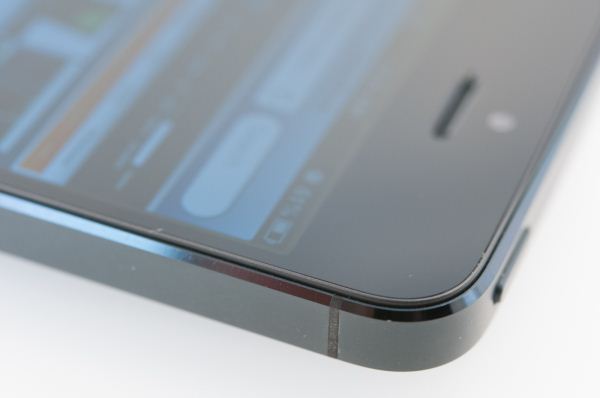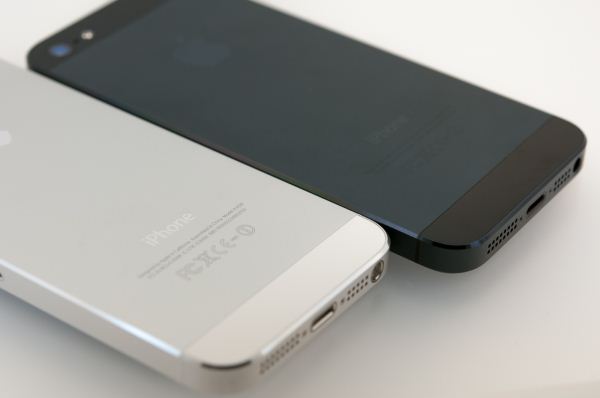The iPhone 5 Review
by Anand Lal Shimpi, Brian Klug & Vivek Gowri on October 16, 2012 11:33 AM EST- Posted in
- Smartphones
- Apple
- Mobile
- iPhone 5
Design
Section by Vivek Gowri
The iPhone 4, when it launched, represented a clean break for Apple's industrial design. It replaced the soft organic curvature of the iPhone 3G/3GS with a detailed sandwich of metal and glass, something that arguably brought the feel of a premium device to a new level. Obviously, Apple had their fair share of issues with the design initially, and nothing could match the sinking feeling of dropping one and shattering the glass on the front and back simultaneously, but it was a small price to pay for the jewel-like feel of the device. Combined with the (at the time) incredible pixel density of the then-new Retina Display, the iPhone 4 was a revolution in hardware design. The chassis has aged remarkably well over the last two-plus years, so naturally it's a hard act to follow.
The 5 keeps a similar design language to the 4, keeping roughly the same shape as before but with a taller and thinner form factor. At first glance, the 5 actually looks almost the same as the 4, with an unbroken glass front face, prominent corner radiuses, the familiar home button, a rectangular cross-section, and metallic sides with plastic antenna bands. However, those metallic sides are part of an anodized aluminum frame that makes up a majority of the body, and that's where the industrial design diverges from the 4 and 4S.
In contrast to the predominantly glass body of the previous generation iPhone, the 5 is almost entirely aluminum other than the glass front face and two small glass windows at the top and bottom of the back. It's a return to the original iPhone/3G/3GS-style of construction, with the front glass clipping into a unibody chassis. It's a significant departure from the 4 and 4S, where the stainless steel band in the center was the main housing that the front and rear panels clipped into. That was pretty radical way of doing things, so it's not all that surprising to see Apple revert to a more conventional and less complex method for the 5.
The aesthetic is actually pretty awesome, especially in the black version. The combination of black glass and off-black aluminum (Apple is calling it slate) gives the 5 an almost murdered out look that's three parts elegant and one part evil. The white and silver model has a classy look that's much friendlier in appearance than the black one. The color schemes and overall design aesthetic remind me of the Dell Adamo, one of my favorite notebook designs of all time. The similarities may be purely coincidental, but it's interesting to note nonetheless and should give you an idea of how premium the industrial design is.
All three previous iPhone body styles had very similar dimensions, so the biggest question with the 5 was how much the larger display would do to change that. Unlike many Android manufacturers, Apple still believes in things like small pockets, small hands, and one-handed smartphone usage. With the 5 being vertically stretched but no wider than the previous iPhones, the biggest impact on in-hand feel is actually the thinner body. If you're used to a larger Android or Windows device, the change seems radical, but even compared to the 22% thicker iPhone 4S, it feels a good deal smaller.
It's not just the minimized z-height though, the 25% weight loss is definitely also a factor. Even a few weeks later, I still find it striking how much less substantial it feels than the 4 and 4S. The densely-packed glass body just had a reassuring weight to it that the 5 simply lacks. But as you get used to the new form factor, you realize how far Apple is pushing the boundaries of ultrathin design. When the 4th generation iPod touch came out, I told Brian that I wanted an iPhone with that form factor - well, the 5 is essentially there (0.3mm thicker and 11 grams heavier, but close enough). It's pretty impressive to think about. If you thought the 4S was one of the best phone designs on the market in terms of aesthetics and build quality, the iPhone 5 just pushes that advantage further.



















276 Comments
View All Comments
KPOM - Wednesday, October 17, 2012 - link
However, Apple made a point about anodizing in its display. Also, Apple has historically placed a premium value on industrial design so it is interesting to read more specifics. What has struck me about Apple is how much time they devote to things people don't notice consciously or will never see on a spec sheet, but which can unconsciously affect the user experience. The aluminum has a nice feel to it, and I can see why Apple would forgo putting a resin coating on it, even though it would make it less susceptible to scratching. Understanding the physics helps make clear what kind of compromises Apple needs to make.phillyry - Sunday, October 21, 2012 - link
As per emotional input:I actually look for this in the review and podcasts because it colours the facts.
While I find the facts to be interesting and a good way to pass the time, at the end of the day my purchase decision, like those of human beings in general, will be largely guided by the sentiment of the matter.
People want to know how happy others are with their devices. Just facts alone lack humanity. I personally love hearing opinions, side comments and anecdotes that give me insight into the thoughts, feelings and experiences of people who's opinions I hold in high regard, such as anand and the gang.
There's something to be said for the qualitative experience that comes with the daily use of the device as your primary 'phone'.
Many others may also be looking to hear the comradery, jest, and fun-casual tone that you can get on this site when these guys just let their opinions out or go off on technical tangents. If you listen to the podcasts it'll all make more sense.
phillyry - Sunday, October 21, 2012 - link
P.S. the feeling that someone else, like anand, has about the device is also important because, if you are considering buying one of these things than you're going to have it for a couple of years and won't want to feel stuck with it.Spunjji - Friday, October 19, 2012 - link
I have to agree here... I already know how anodizing works (not specialist knowledge, we were taught in high-school...) and even if I didn't, I'm not sure a 'phone review is the best place to learn. An outside link would have sufficed. The whole thing does basically say that Apple had no choice in the matter unless they change the design, and that's really the point there. They should have changed the bloody design.arghhh - Tuesday, October 16, 2012 - link
How is it as a phone? Iphone never has been good at its primary function (I take an old clamshell over most smartphones in that regard).Arbee - Tuesday, October 16, 2012 - link
Brian Klug covered voice quality in this writeup, and AT's previous iOS 6 review covered the new voice call features. The upshot is it's at least as good as any other smartphone, even if no cellphone can replace a hardwired slab of mid-60s AT&T bakelite :)manik. - Tuesday, October 16, 2012 - link
Awesome read.Tangey - Tuesday, October 16, 2012 - link
The gpu comparison table shows the new iPad running @200mhz, it actually runs @250mhz ( as did the gpu in the ipad2). In a previous article you used this incorrect 200mhz as a reference point to determine that the iphone5 was running its gpu @266mhz.My calculations based on the iphone5's performance relative to the ipad3 @ 250mhz, indicate to me that the 543mp3 in the iphone5 is running in excess of 300mhz, most likely 325mhz, which also happens to be an exact divider of the 1.3ghz clock of the CPUs.
DustoMan - Tuesday, October 16, 2012 - link
Have you ever looked into why phones from certain manufactures are so picky about their chargers? I've had phones from HTC, Motorola, and Samsung and I've had three wildly different experiences when it comes to what chargers will work in what devices. When I had an HTC Incredible, I could stick pretty much anything I wanted to it and it would charge. If the charger didn't have much current, it would charge slower than a charger with my current. My Galaxy Nexus would work with a few of my chargers, but the oddest thing would happen when I would try connecting it to a Griffin car adapter that had the 1.5A plug necessary to charge a first gen iPad. The only plug that would charge it consistently was a car adapter that I purchased that was branded Samsung. Even an adapter that Verizon sold me as being compatible wouldn't work. Finally the worst offender is my wife's Droid 2 Global. It will only charge with a Motorola adapter. Adapters that work with my Galaxy Nexus, which you would think would need chargers with a higher current, wouldn't work. To charge her phone on my PowerMat, I have to plug the phone into a reserve battery and then use the Powermat to charge that reserve battery while it's charging her phone. Stupid huh?zephxiii - Tuesday, October 16, 2012 - link
Yes i recall Motorola's earlier microUSB equipped phones to be very picky....especially if the battery went completely flat as it seemed like only Motorola chargers (or compatible) would breathe life back into them.